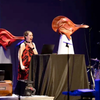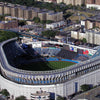Looking Back at Deep Blue

Part of Deep Blue on display. (Source: Smithsonian)
For all the talk of the current boom in artificial intelligence, it is easy to forget that these advances are a long time coming. Perhaps the most memorable watershed moment in the history of AI was the 1997 chess match between Grandmaster Garry Kasparov and Deep Blue, an IBM-built supercomputer. Deep Blue beat Kasparov, considered the best chess player in the world, in the final game of a six-game rematch, a major legitimization of artificial intelligence.
Kasparov and Deep Blue first played in 1996 in Philadelphia, where the machine took one game, Kasparov took three, and the other two were played to draws. A year later, after Deep Blue had scrimmaged Grandmaster Joel Benjamin and others, they played again in New York’s Equitable Center skyscraper. Kasparov won one game, Deep Blue another, leaving three draws, with the final game determining the winner. Kasparov ultimately resigned the game, handing the victory to Deep Blue, though he later accused the computer of being aided by a human Grandmaster, much like the 18th century Mechanical Turk machine.

Kasparov playing Deep Blue during the 1996 match. (Source: AP)
Kasparov’s charges of fraud were never proven—Deep Blue was simply the product of many chess computers that came before it. It was a successor to IBM’s previous Deep Thought (named for the computer in Hitchhiker’s Guide) and laid the groundwork for Deep Junior, Deep Fritz, and others. The machine operated 480 processors across two computer towers, capable of calculating 200,000,000 moves in a single second. With this approach, the computer does not have to think so much as it has to simply run the numbers and brute force its way to a victory.
Today, chess computers can trounce even the most adept Grandmasters and the entire field is something of a settled science. Deep Blue’s victory is hailed as a major step forward for artificial intelligence, demonstrating the capacity for AI to function in a fixed system like a chess board. However, perhaps it should be remembered that Kasparov was able to hold his own for so long because he did not use brute force, but drew from abstract reasoning and experience to make his moves, something a computer cannot reproduce in the same way.
Read more!
Newborn M. Beyond Deep Blue : Chess in the Stratosphere. Springer; 2011. doi:10.1007/978-0-85729-341-1
Featured Product
Joe Frazier Boxing Glove
Cool Things!

Is “Paul is Dead” Dead?: Unpacking One Of Pop Culture’s Most Enduring Conspiracy Theories

Scientists Discover Hooves and Skin in Preserved Dinosaur "Mummies!"
A dinosaur discovery just in time for Halloween! In a new analysis of a group of fossils from Wyoming, Scientists have determined this group of fossils are dinosaur “mummies,” with preserved skin and even hooves.

Scientists Record a Bat Catching Birds Mid-Flight!
Bats, birds, screeches, oh my! In a reverse-Hitchcock twist, a new study reveals that a species of European bat catches and eats birds mid-flight.
Specimen Deep Dives

The House that Ruth Built: The Story of the Old Yankee Stadium

The Queen of the Skies: the Story of the Boeing 747

Old Ironsides: The USS Constitution and the Start of the U.S. Navy
Long Form Articles

The Artist Behind the Macintosh: Susan Kare and Apple Computers
While the two Steves, Jobs and Wozniak, are the most well known faces behind Apple computers, equally important to the products and culture of the company were those who crafted the experience of using their computers through design. The most notable of these visual architects was Susan Kare, a designer responsible for “humanizing” Macintosh computers.

Can I Lick It? Yes You Can!
Have you ever been unable to tell if a fossil was really a fossil, but you were too embarrassed to admit it? Have you ever wanted to lick a fossil just because, but you didn’t want to risk judgment from your peers? Well, good news! You can kill two birds with one stone! Licking a fossil can actually help you determine if it’s the real deal or just another rock.

Is It Legal To Own a Meteorite: How to Start Your Outer Space Collection!
Meteorites are some of the rarest geological specimens to be found on Earth. Of course, since these stones are not of our world, purchasing them can sometimes be a confusing process. Is it legal to own a meteorite? In short, yes! Read on for help starting your cosmic collection!

















